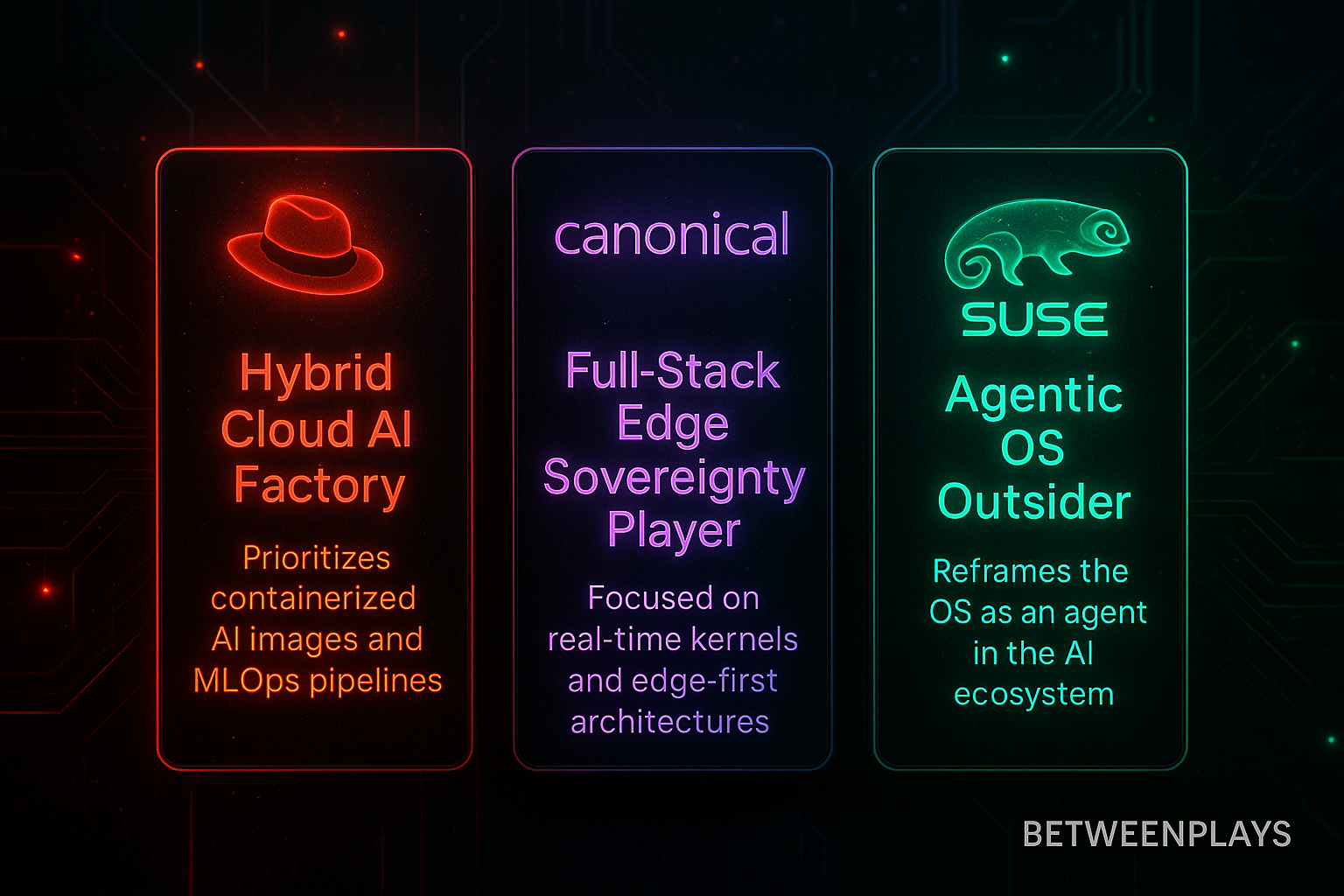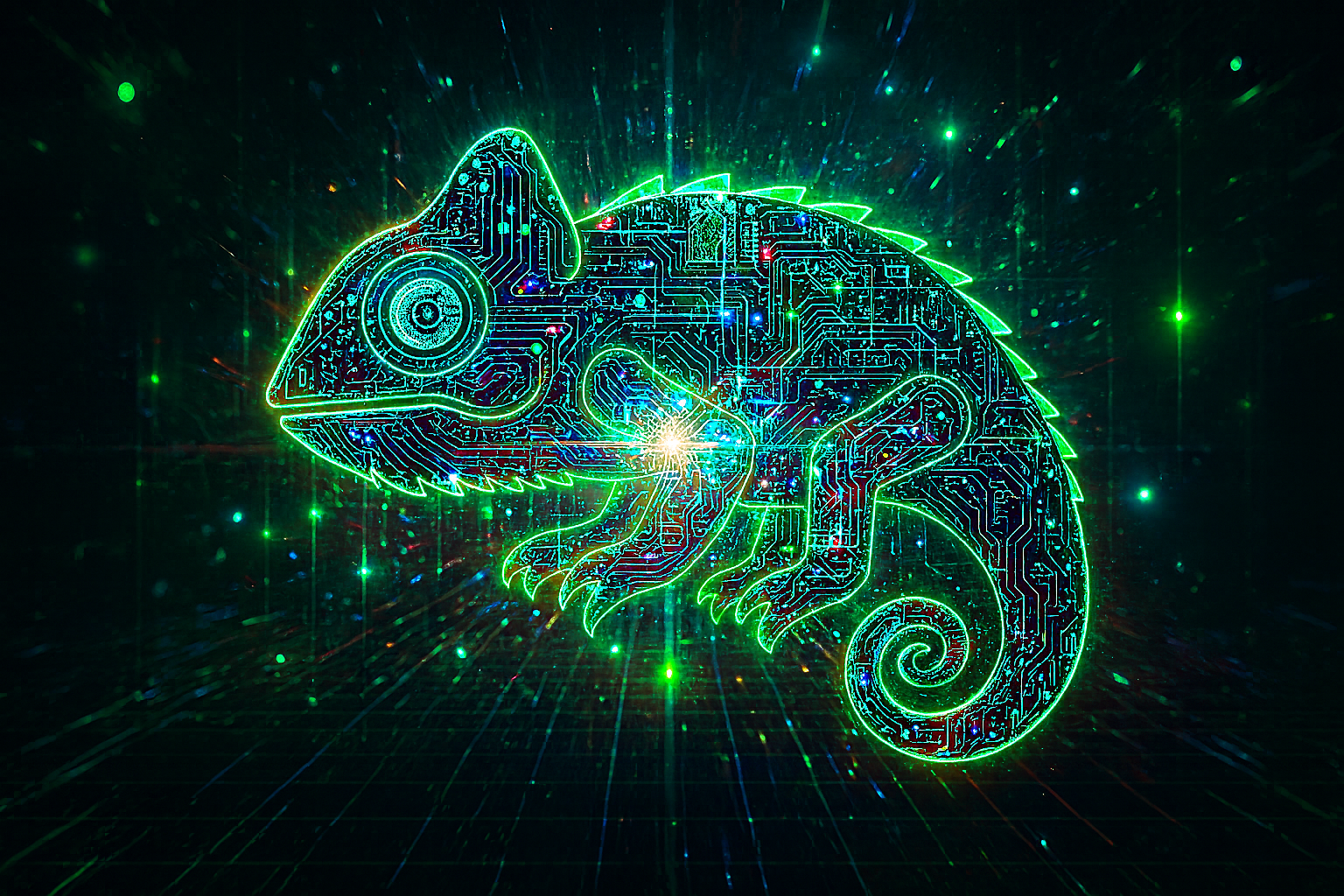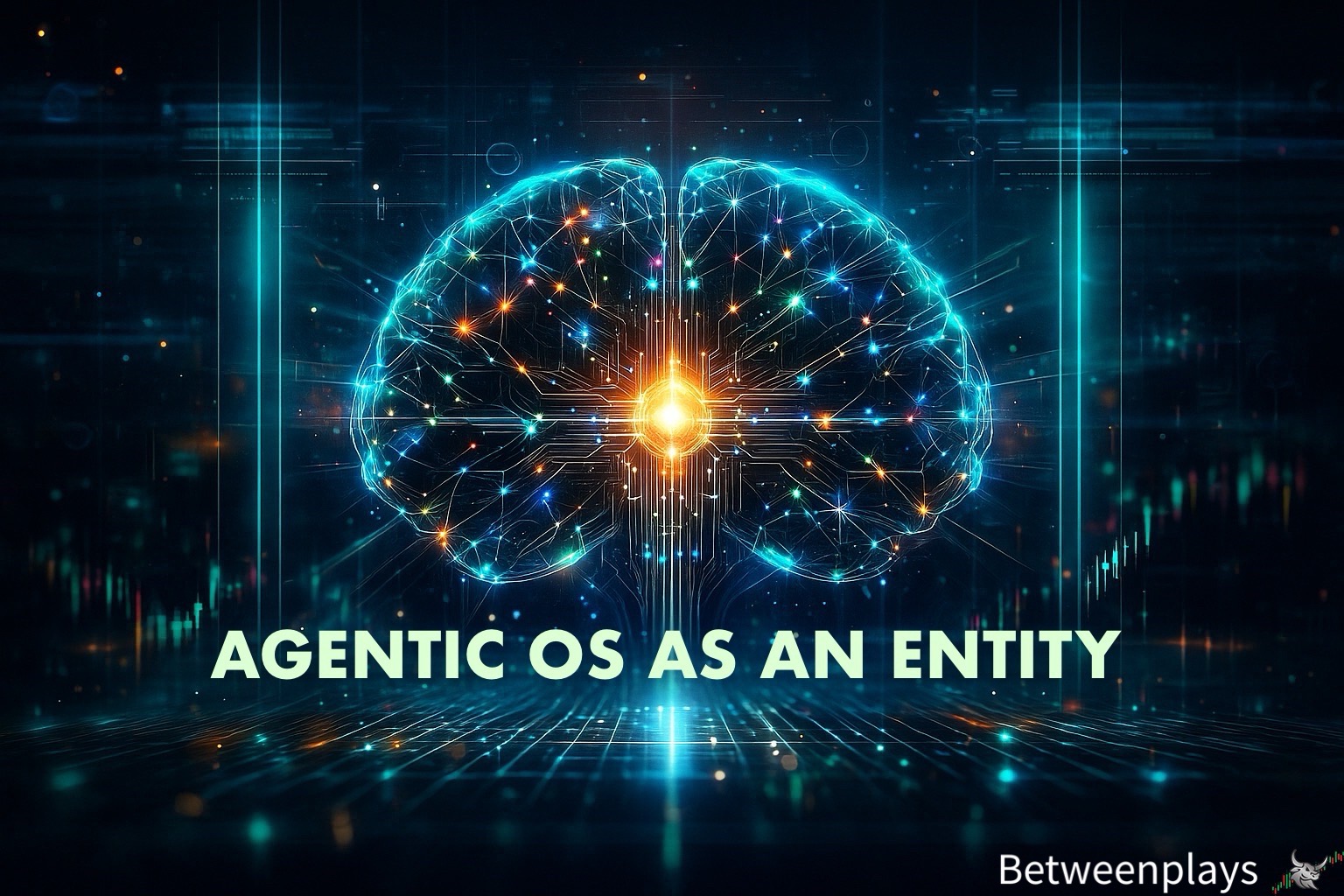🎙️ Betweenplays Media Feature — Not Financial Advice.
The Agentic OS Era has Arrived: The Reinvention of the Operating System.
Some revolutions announce themselves with fanfare. Others happen quietly, in the substrate of systems we take for granted.
SUSE Linux Enterprise Server 16 (SLES 16), with its introduction of the Agentic OS, belongs to the latter category—a fundamental rethinking of what an operating system actually is and what role it should play in a world defined by autonomous compute, AI-native infrastructure, and real-time decision environments.
The Operating System as a Pilot, Not a Passenger
For decades, the operating system has been designed to be a neutral party: stable, predictable, static, and deliberately uninvolved in the “thinking” portion of an enterprise architecture. Applications think. Platforms orchestrate. Humans decide. The OS merely hosts. That model is collapsing.
AI is no longer a “workload” that lives above an OS. It is now part of the operational, computational, and security fabric itself. The traditional OS—monolithic, reactive, passive—is increasingly incompatible with environments where intelligence exists in every layer of the stack.
SUSE is the first major enterprise Linux distribution to accept this reality and embrace it, turning the OS from a passive substrate into an autonomous system. This isn’t just evolutionary; it is architectural upheaval. This is the arrival of the Agentic OS: an operating system that supervises itself, optimises itself, defends itself, and collaborates directly with AI models as first-class system entities.
To understand why SLES 16 represents more than an incremental update—why it signals a profound shift in enterprise infrastructure—we must examine how SUSE reframed the role of the OS, how competing Linux vendors responded, and how the accelerating Silicon Cold War (custom chips, vendor lock-in, sovereign AI, ASICs, NPUs, and GPU monopolies) has forced operating systems into full autonomy.
The Birth of the Agentic OS
Historically, the OS had a simple mandate: provide predictable performance, ensure secure execution, abstract hardware, support applications, and simply stay out of the way. This created an implicit hierarchy: hardware → OS → applications → orchestration → AI.
A Paradigm Shift in the Foundation of Computing
The reality of modern enterprise computing has inverted this stack. AI is now the scheduler, the security layer, the workload arbitrator, the policy engine, the decision-making layer, and the hardware utilisation governor. When intelligence becomes part of the infrastructure, the OS cannot remain a static, 20th-century abstraction. It must evolve into a participant—a governor—inside the computational system.
This is SUSE’s thesis. SLES 16 doesn’t simply “support AI workloads.” It embeds AI into the operating system’s core behaviour.
SUSE’s Agentic OS reframes the OS as an active intelligence layer, a self-healing, predictive controller, and a security co-processor for the entire environment. It functions as a universal abstraction layer for specialized silicon and a runtime for local AI agents and Small Language Models (SLMs). Ultimately, the Agentic OS is designed to be a decentralised, autonomous computational unit capable of participating in larger agentic networks. In other words: The OS becomes a sovereign digital entity, not a hosting environment.
The Pillars of Agentic OS
SUSE defines the Agentic OS around three transformative pillars: Integrated AI Acceleration and Optimization, Autonomous and Predictive Operations, and Universal Hardware Abstraction. Each pillar expands the computational mandate of the OS beyond traditional boundaries and into the realm of intelligent, autonomous decision-making.

1. Embedded AI Acceleration & Optimization
SLES 16 introduces a kernel that is not only optimised for AI and ML workloads but actively priorities them. The Workload-Aware Kernel gains intelligence at the core: it detects AI processes, intelligently assigns memory, optimises cache locality, and schedules GPU/CPU/NPU resources dynamically to reduce jitter and latency for real-time operations. While a traditional OS is agnostic to the nature of the workload, treating inference like any other process, SLES 16 differentiates. It understands that some workloads are the beating heart of the enterprise—like the computer vision and robotics coordination running on a factory floor.
The OS that understands its workloads
The OS is a native host for Integrated Model Management, supporting Small Language Models (SLMs), Retrieval-Augmented Generation agents, and local inference servers. Tasks like model lifecycle management, versioning, and caching are now part of the OS layer, dramatically reducing friction for edge environments where cloud-based model management is impractical or undesirable. This is backed by deep Hardware/Software Co-Optimization, with SUSE working closely with silicon providers—including Intel, NVIDIA, and AMD Instinct—to enhance kernel pathways and actively leverage heterogeneous accelerators.
2. Autonomous and Predictive Operations
A system that supports Zero-Touch Provisioning and Living Infrastructure, combined with companion products like Rancher, SLES 16 can deploy Kubernetes nodes automatically, scale clusters based on AI-driven demand predictions, and provision edge nodes without human intervention, becoming the foundation of a self-sustaining computational ecosystem. This is aided by key underlying stability features like Instant Rollback (allowing administrators to surgically revert nearly any system modification) and Reproducible Builds, enhancing security and verifiability SUSE News, November 2025.
The OS as a self-governing entity
Autonomy is the defining characteristic of the Agentic OS. The goal is to move failures from being major outages to manageable micro-events.
The Self-Healing Systems within SLES 16 continuously monitor filesystems, memory health, network behavior, and security posture. When anomalies appear, the OS intervenes without human involvement: restarting subsystems, patching broken dependencies, running diagnostics, and rebalancing loads. This crucial shift is complemented by Adaptive Security, where the OS uses AI to analyze network traffic, detect lateral movement, and autonomously adjust firewall rules to quarantine potential threats. This resembles what modern Endpoint Detection and Response (EDR) platforms do, but now it’s built directly into the OS itself.
3. Universal Hardware Abstraction
The AI era has fractured the hardware landscape, introducing GPUs, TPUs, NPUs, Custom ASICs, and proprietary interconnects. Most operating systems treat this as a user problem; SUSE treats it as an OS responsibility.
The OS has the high ground in the silicon arms race
SUSE’s integration of the open Model Context Protocol (MCP) is the governance layer that standardises communication between models, agents, hardware, and system state [Model Context Protocol Specification]. MCP enables AI services to request context from SLES 16 and trigger policy-governed actions on the server. This allows developers and enterprises to maintain choice and portability, avoiding vendor lock-in and building consistent agent behaviour across heterogeneous architectures. Where silicon vendors push lock-in, SUSE pushes structural freedom. The Agentic OS acts as the universal interpreter, the scheduler, and the negotiator between silicon types, providing a stable control plane in a fractured hardware landscape. This is necessary because, as AI accelerators multiply, the OS becomes the single most important abstraction layer in the enterprise stack.
Hardware Wars and Agentic OS
A tectonic shift is reshaping the infrastructure industry, where AI has triggered unprecedented cooperation and fragmentation.
The New Alliances are dramatic. Intel and NVIDIA—a previously unthinkable partnership—are jointly developing custom CPU/GPU platforms explicitly for AI, seamlessly connecting their architectures using NVIDIA NVLink Intel Newsroom, September 2025. Similarly, Cisco and NVIDIA have announced a unified AI-grade Ethernet architecturebuilt for massive clusters, leveraging Cisco Silicon One and NVIDIA Spectrum-X Cisco Newsroom, October 2025. SLES 16 is designed to be the essential bridging layer, optimised across all major silicon architectures to function as the universal OS abstraction.
However, this is matched by The Great Fragmentation as Hyperscalers (AWS, Google, Microsoft) and major players (OpenAI, Broadcom) build custom silicon (Trainium, TPU, Maia). This creates sovereignty and efficiency but results in no single hardware standard, divergent interconnects, and pervasive vendor lock-in.
The Agentic OS becomes the solution to this chaos. It acts as the universal interpreter, the stable control plane in a fractured hardware landscape. Where hardware vendors attempt to lock enterprises into proprietary ecosystems, SUSE provides a portability-first neutral territory. As AI accelerators multiply, the OS becomes
The AI Linux Race — The SUSE Difference
The battlefield is defined by three major enterprise Linux vendors—Red Hat (RHEL), Canonical (Ubuntu), and SUSE (SLES)—each choosing a completely different path into the AI era.

Red Hat prioritises the Hybrid Cloud AI Factory. Its strategy centres on OpenShift AI and RHEL AI, emphasising containerised AI images and building enterprise-ready MLOps pipelines. Red Hat’s approach is powerful for large-scale AI training and tuning, but it sees AI belonging on top of the OS in a secure, managed pipeline. RHEL hosts AI; it does not co-govern it.
Canonical is focused on the Full-Stack Edge Sovereignty Player. Its thrust is built on real-time kernels, sovereign cloud, and edge-first architectures, optimising for hardware diversity and distributed inference. Ubuntu is becoming the de facto choice for embedded AI, robotics, and edge clusters. Canonical believes AI belongs everywhere and should be universally accessible through open-source stack consistency.
SUSE stands as the Agentic OS Outsider with a fundamentally different thesis. SUSE is not trying to build an MLOps empire or own the sovereign edge. Instead, it reframes the OS itself. The philosophical break is clear: the OS shouldn’t just run AI; the OS should be an agent in the AI ecosystem. This places SUSE in a category by itself. In the history of operating systems, very few vendors have attempted a shift this dramatic—it is bigger than the shift to the containerised OS.
The single most important abstraction layer in the enterprise stack.
The Enterprise Implications
The rise of the Agentic OS is not a niche event. It affects cybersecurity, infrastructure operations, edge architectures, factory automation, telecommunications, and sovereign AI efforts globally.
A New Computational Order is Emerging: AI is not an application; AI is not a workload; AI is becoming the operational environment itself. The OS is the only layer that can see everything, coordinate everything, secure everything, optimise everything, and abstract everything. That makes SLES 16 more than an update. It makes it a historical pivot.
Agentic OS as an Entity
The advent of the Agentic OS marks the end of the operating system’s 70-year reign as a passive host. The shift embodied by SLES 16—from hosting intelligence to being intelligent—is not merely a product update; it is the final, necessary evolution of the abstraction layer.

The most immediate industry implication is the role of the OS in the Silicon Cold War. As custom hardware proliferates, the Agentic OS becomes the indispensable universal interpreter, abstracting the chaos of fragmentation through standards like the Model Context Protocol (MCP). This forces the OS to the highest point of value in the enterprise stack.
Furthermore, the Agentic OS destroys the traditional boundary between systems management and AI engineering. Infrastructure will no longer be managed by IT operations in isolation; it will be self-managed by agents embedded in the kernel, making real-time, autonomous decisions on security and resource allocation. The System Administrator becomes the AI Governor.
This power creates an inherent, terrifying risk: the new security surface. An Agentic OS can provide a living, breathing Adaptive Security layer, but if that autonomous core is compromised, the entire environment is vulnerable to an intelligent, self-optimising adversary. The OS becomes the ultimate target.
Now we must ask: Will this new autonomy ultimately serve human purpose, or will the complexity of managing a sentient, self-governing OS unleash a new era of risk that IT teams are ill-equipped to control? The future of computing depends on the answer to that question.
REFERENCES
- Broadcom. (2024). Broadcom and OpenAI collaboration announcement. https://www.broadcom.com
- Canonical. (2024). Ubuntu AI and Sovereign Cloud architectures. https://ubuntu.com
- Cisco Systems. (2025, October). Cisco Delivers AI Innovations across Neocloud, Enterprise and Telecom with NVIDIA. https://newsroom.cisco.com/c/r/newsroom/en/us/a/y2025/m10/cisco-delivers-ai-networking-innovations-across-neocloud-enterprise-and-telecom-with-nvidia.html
- Intel Newsroom. (2025, September). Intel and NVIDIA to Jointly Develop AI Infrastructure and Personal Computing Products. https://newsroom.intel.com/artificial-intelligence/intel-and-nvidia-to-jointly-develop-ai-infrastructure-and-personal-computing-products
- Model Context Protocol. (n.d.). Specification. https://modelcontextprotocol.io/specification/
- Red Hat. (2024). RHEL AI and OpenShift AI overview. https://www.redhat.com
- SUSE. (2025, November). SUSE Linux Enterprise Server 16 – AI-Ready, Long-Term Support.https://www.suse.com/news/suse-linux-enterprise-server-16-ai-ready-long-term-support/
- SUSE. (2024). SUSE and Intel deepen AI optimization partnership. https://www.suse.com
- TechRadar. (2024). NVIDIA NVLink and the ecosystem lock-in debate. https://www.techradar.com

